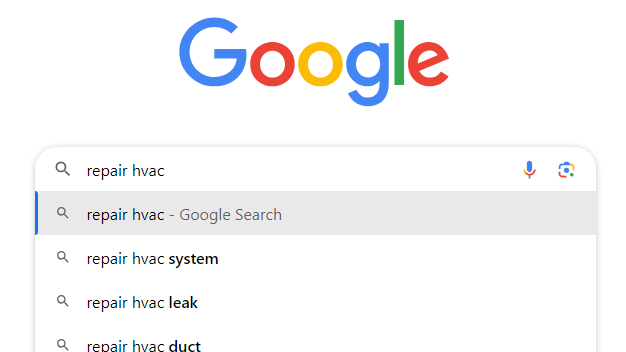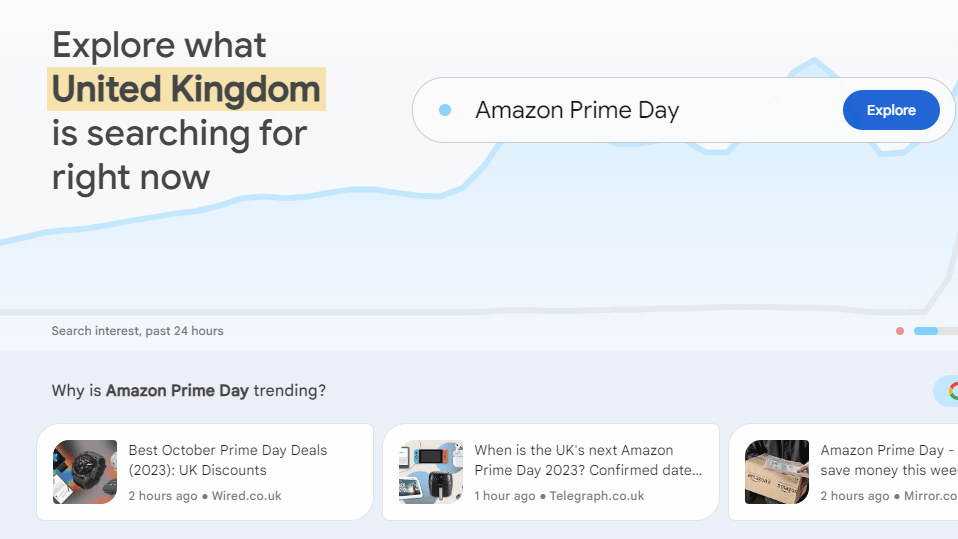If you’re familiar with search engine optimization (SEO), you’ve probably heard of keywords — the phrases that users type into a search engine when they want to find something.
Choosing the best keywords is vital to the success of your SEO efforts. That’s why we’re bringing you this complete SEO keyword research guide! This can be a daunting, yet profitable, task. Don’t be afraid to reach out to an SEO company for assistance. Otherwise, keep reading to dive in and learn how to do keyword research for SEO!
- What are SEO keywords?
- What is keyword research for SEO?
- Why is SEO keyword research important?
- How to do keyword research for SEO
What are SEO keywords?
SEO keywords are words and phrases you add to your online content to improve your website’s rankings for those terms. The goal is that when a user searches for that keyword on a search engine like Google, your website will appear as one of the top search results.
Why are SEO keywords important?
SEO keywords are vital to your SEO efforts because you need to use them in your content in order to rank in the search results. When a user searches for a term related to your business online, you want your website to be one of the first results. And to achieve that goal, you must incorporate those terms throughout your content and website.

“Our systems analyze the content to assess whether it contains information that might be relevant to what you are looking for. The most basic signal that information is relevant is when content contains the same keywords as your search query.”
3 most important SEO keyword metrics
The most important SEO keyword metrics include:
| Metric | Measures | Use case |
| Search volume | The number of monthly searches | Understand a keyword’s potential reach |
| Keyword difficulty | The difficulty to rank for a given keyword, based on a domain’s backlink strength | Determine if it’s feasible to rank for a given keyword, based on your domain |
| Cost per click | The cost advertisers pay (per click) to appear for a keyword | Understand a keyword’s potential value and return on investment |
What is keyword research for SEO?
Keyword research for SEO is the process of identifying the words or phrases your target audience searches for online so you can target them for your SEO strategy. It can involve using various keyword research tools and platforms to create a list of the best phrases to target in your content.
Why is SEO keyword research important?
Keyword research is important because it helps you identify which phrases your target audience uses to find your products or services on search engines like Google.
There’s a common SEO myth that you can get away without keyword research. However, this is far from the truth.
Once you know these phrases, you can incorporate them into your content, improving your SEO while helping your website rank at the top of the results each time someone searches for those words.
In other words, you’ll be able to reach more of your target market and increase your online visibility.
That means that with the right keyword targeting, you’ll drive more web traffic, high-quality leads, and sales for your business.
What are the most popular keyword research tools?
The most popular keyword research tools for SEO include:
| Tool | Cost |
| Keyword Generator | Free |
| Soovle | Free |
| Google Trends | Free |
| Google Keyword Planner | Free |
| Soolve | Free |
| Keywords Everywhere | Freemium |
| Ahrefs | Paid |
You can learn more in our complete compilation of keyword research tools.
How to do keyword research for SEO
Now you know what SEO keyword research is and why it’s important, but how exactly do you research keywords and find the right ones to target?
Here’s how to do keyword research for SEO in 10 steps:
- Use SEO keyword research tools to start off your keyword list
- Use Google Suggest and Google Trends to discover keywords
- Find out what keywords your competitors rank for
- Look at keywords you already rank for
- Create a list of your keyword ideas
- Look out for long-tail keywords
- Analyze keyword volume and competition
- Look at the search intent
- Determine target and related keywords
- Finalize your keyword list
1. Use SEO keyword research tools to start off your keyword list
One of the best ways to research keywords is to use SEO keyword research tools.
These tools, whether free or paid, make your life easier by:
- Sharing estimated monthly search volume and keyword competition
- Tracking keyword ranking changes over time
- Highlighting keyword opportunities
- And more
There are a number of helpful keyword research tools you can try, too, like:
Most of these tools operate by simply entering a starting phrase. The tool then generates a list of related phrases, terms, and questions that people search for online.
While you will need to weed through these lists to pick out the best phrases for your content (more on that later), these tools are a great starting point for your SEO keyword research.
Free keyword generator
Oops! You are too eager for information and you’ve reached your daily amount of requests. Feel free to check it tomorrow.
Mmm… an error occurred during processing. Please refresh the page and try again.
We are working to fix it right now. Please, try again in a few minutes.
Access denied: Your session token is invalid or missing. Please refresh the page to continue.

Keyword ideas for “”
| Keyword | Cost per Click | Keyword Difficulty | Search Volume |
2. Use Google Suggest and Google Trends to discover keywords
Another great way to discover keywords for your SEO strategy is to use Google Suggest and Google Trends.
Google Suggest is the list of suggestions that appear when you start searching for something on Google. These suggestions are perfect candidates for potential keywords to target.

And as a bonus, these suggestions are usually long-tail keywords.
In the example above, for instance, you can see examples of short- and long-tail HVAC keywords.
Long-tail keywords, as the name suggests, are longer keywords that contain multiple words or a longer phrase and are usually more specific. For example, “brownie” is a short-tail keyword, while “chocolate brownie recipe” is a long-tail keyword.
Long-tail keywords are usually less competitive and easier to rank for than short-tail keywords.
Google Trends can also give you lots of potential keyword ideas. This tool shows you what searches are currently trending on Google.

Using this tool is a great way to get an idea of which keywords related to your business are currently popular, making it easy to target keywords your audience is searching for repeatedly.
3. Find out what keywords your competitors rank for
Next in our guide for how to do keyword research for SEO is to scope out what keywords your competitors currently rank for.
After all, the goal is to outrank your competitors in the search results so you can drive more traffic and leads. Plus, your competitors already offer some of the same products or services as you, so there’s a high probability the keywords they rank for will be relevant to you.
So, what better way to outrank your competitors in the search results than to research the keywords they already rank for?
You can use a competitor analysis tool to accomplish this. Once you’ve identified the keywords your competitors rank for, you’ll have the ultimate list of keywords to target in your content.
4. Look at keywords you already rank for
It’s also a good idea to check out the keywords your site already ranks for.
You might be thinking, “But wait, I’m already ranking for them, so why do they matter? Shouldn’t I be trying to rank for new keywords?”
Yes, you should try to rank for new keywords, but that doesn’t mean you should ignore the ones you already rank for. In fact, by looking at your existing keywords, you’ll probably also find some new keywords you can optimize for.
The best way to check out your current keyword rankings is to head to Google Search Console and navigate to the Search Results report. From there, look at your current keyword rankings under the Queries tab.

Odds are, lots of these will be familiar to you, but you may be surprised to find some that you haven’t optimized for. Google has already deemed your website a good candidate for ranking for those terms.
If you aren’t already ranking on page one, and these keywords make sense for your SEO strategy, it’s a good idea to optimize for them and boost your rankings and traffic even more.
5. Create a list of your keyword ideas
Now that you’ve used some SEO keyword research tools and scoped out your competitors’ keyword rankings along with your own site’s rankings, it’s time to create a list of all the keyword ideas you’ve accumulated to use.
You can create a list in any format that works best for you. Maybe you type up your keyword ideas in a Word document or in an Excel spreadsheet. If you’re using SEO.com (or even Google Search Console), you can easily export keyword data in a .csv file.
Whatever you choose, make sure you list all of your ideas in an organized fashion because you’ll need to look at this list again in the future or likely share it with other team members.
6. Look out for long-tail keywords
Once you’ve compiled your list, it’s time to analyze it and narrow it down.
While you likely have some great keyword ideas jotted down, it’s possible that not all of them will be a good fit for your SEO strategy, so it’s important to take the time to go through the entirety of your list and weed out the less desirable keywords.
The first thing you’ll want to include in your final list is long-tail and out-of-the-box keywords. As we mentioned before, long-tail keywords are usually less competitive and easier to rank for than short-tail ones, so it’s a great idea to include these in your SEO strategy.
Keep an eye out for phrases like “chocolate chip cookie recipe” vs. “cookie” or “HVAC technician in Cleveland” vs. “HVAC technician.” (If you’re in the HVAC market and are looking for more keyword ideas, check out our compilation of the best HVAC keywords).
7. Analyze keyword volume and competition
You’ll also want to analyze the search volume and competition for the keyword ideas on your list.
The search volume refers to how many people search for that keyword. The higher the search volume, the more people are typing that word or phrase on search engines.
The keyword competition, sometimes called keyword difficulty, refers to how challenging it will be to rank for that keyword in the SERPs. The higher the keyword difficulty, the more challenging it will be to earn a top spot in the search results.
The goal is to choose keywords that have a high keyword volume and low competition.
But this can be easier said than done. In fact, you might notice that keywords with a higher search volume also have more competition.
Try to choose keywords that fall somewhere in the middle. You should pick keywords with a decent search volume and a lower keyword difficulty, so you have a better chance at ranking at the top of the search results and can drive a decent amount of traffic to your site.
8. Look at the search intent
Now that you’ve narrowed down your keyword idea list using long-tail keywords, search volume, and search difficulty, it’s time to look at search intent.
Search intent is the reason why a user types a particular word or phrase into a search engine. When someone searches for something online, they want to solve a problem, answer a question, or get more information about a topic.
If your content doesn’t match the search intent of your keyword, it won’t rank. Even more importantly, you want to make sure that answering the search intent makes sense for your business.
For example, if you run an HVAC company, it wouldn’t make sense to match the search intent of a keyword like “plumber near me” because you don’t offer those services.
It’s important to analyze the search intent of the keywords on your list to ensure that you can (and want to) answer the search intent for your keywords.
9. Determine target and related keywords
Another important step in the SEO keyword research process is determining target and related keywords.
A target keyword is the main keyword you want to target in your content. Related keywords, as the name suggests, are related to your target keyword. They aren’t your core keyword, but you target them secondarily on your pages.
For example, let’s say your target keyword is something like “Italian restaurant.” Some related keywords you can also target could be “local Italian restaurant,” “Italian restaurant near me,” and “Italian restaurant in Philadelphia, PA.”
It’s important to group your keywords into target and related keywords to ensure you don’t create duplicate content. This strategy also helps you create content that will appear in multiple relevant search results, maximizing your online visibility.
Take a look at your keyword list to determine which words and phrases are target keywords and which are related keywords. You should also brainstorm and research any target and related keywords that are missing from your list.
10. Finalize your keyword list
Now that you’ve analyzed and brainstormed target and related keywords, it’s time to finalize your keyword list.
Take one last look through your list to ensure that the keywords are a good fit for your company in terms of search intent, search volume, and keyword difficulty.
Once you’ve finalized your list, all that’s left is to start targeting your keywords by creating valuable, helpful, and optimized content and watch your rankings and traffic soar.
[Template] Keyword map
Start your keyword research journey with this free keyword map template:
| Keyword | Target URL | Buyer Journey Stage | Content Type |
| example keyword | /blog/example-page | Awareness | Blog |
| another keyword example | /services/example-page | Decision | Sales/Service |
| a different keyword example | /blog/example-page | Consideration | Blog |
Ready to boost your online visibility and drive more traffic?
Keyword research is essential for understanding the phrases your target audience uses to find your products or services. By effectively incorporating these keywords into your content, you can enhance your SEO and improve your search rankings, ultimately reaching more of your target market.
This process can seem overwhelming, but it’s incredibly rewarding. Need help in optimizing your keyword strategy? Get started by contacting us online today and find out how we can help drive high-quality leads and sales for your business!
Let’s Drive Results Together 
Table of Contents
- What Are SEO Keywords?
- Why Are SEO Keywords Important?
- What is Keyword Research for SEO?
- Why is SEO Keyword Research Important?
- How to Do Keyword Research for SEO: Best Practices for Choosing the Best Keywords
- 1. Use SEO Keyword Research Tools to Start off Your Keyword List
- 2. Use Google Suggest and Google Trends to Discover Keywords
- 3. Find out What Keywords Your Competitors Rank for
- 4. Look at Keywords You Already Rank for
- 5. Create a List of Your Keyword Ideas
- 6. Look out for Long-tail Keywords
- 7. Analyze Keyword Volume and Competition
- 8. Look at the Search Intent
- 9. Determine Target and Related Keywords
- 10. Finalize Your Keyword List
- Ready to Boost Your Online Visibility and Drive More Traffic?
Don’t fail your website’s most important test
Get an SEO scorecard of your website for free in less than 30 seconds.
Writers

Related Resources
- SEO Title Tags: What Are They? [+ 5 Tips to Optimize Yours]
- Should You Target Misspelled Keywords in SEO?
- Should You Target Zero-Volume Keywords? (And How to Find Them)
- The Basics of Registered Trademarks & Symbols in Title Tags
- What Are Internal Links? A Guide to Internal Linking Basics
- What Are Low-Hanging Fruit Keywords and Why Do They Matter?
- What Are Meta Descriptions? (And How to Write Them)
- What is an SEO Score? Definition, Factors, and How to Improve
- What is First Link Priority? (And Does It Affect Rankings?)
- 100+ Best SEO Keywords for Ecommerce Businesses



